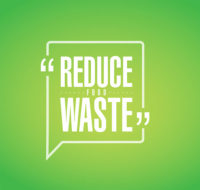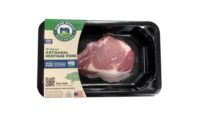Ensuring food safety should not increase food waste

By Matt Hale, International Sales & Marketing Director, HRS Heat Exchangers
The first duty of any food or drink manufacturer is to supply its consumers with a product that is safe. Due to their organic nature, some of the most wholesome and natural products, such as milk, cheese, yoghurt, fruit and vegetables, and meat products are all subject to spoilage by biological organisms including bacteria and fungi. While maintaining good equipment hygiene through the use of effective protocols, such as Cleaning-in-Place systems, is essential, it is also economically important that perfectly usable product is not discarded as part of routine cleaning operations.
Up to one in six Americans get sick from the food they eat, with up to 3,000 people dying each year; a trend which has steadily increased since the late 1990s1. Such a trend is clearly unacceptable and resulted in the Food Modernization Act of 2011. This is a wide range of sweeping standards for growing and harvesting fruits and vegetables, inspecting food production and mandating product recalls, which is not due to be fully implemented until 2022, depending on other political influences and potential repeals. One of the key aims of the 2011 Act is to improve food safety for consumers.
The Act also shifts more responsibility for ensuring and policing food safety to the U.S. Food and Drug Administration (FDA), although the Food Safety and Inspection Service (FSIS) still has a major role. In terms of the systems used, Hazard Analysis and Critical Control Point (HACCP) principles have been a legal requirement for meat and poultry plants since 1996 and today HACCP is widely used in most sectors of the food and drink industry. As a result, many areas of controlling food safety, such as ensuring that equipment is sanitary and preventing contamination, use common approaches across a wide range of food and drink sectors. One of these is the use of automated and semi-automated Clean-in-Place (CIP) systems for processing equipment, such as pipework, heat exchangers, pasteurizers, fillers, pumps, etc.
CIP systems offer a number of advantages over manually disassembling, cleaning, checking and then re-assembling plant. Not only are they much quicker, and less labor intensive, but they also reduce costs and allow more frequent and therefore more effective routine cleaning of systems to be carried out. This is a big benefit in terms of maintaining food safety and preventing the growth of microorganisms which could spoil products or pose a risk to health. There are many different types of mechanical and automatic cleaners employed in the food industry, using everything from plain water or suitable cleaning chemicals, through to ultrasonic and UV cleaning techniques. However, before any CIP can be carried out, as much product as possible must be removed from the equipment to be cleaned.
Traditional flushing and ‘pigging’ systems (which physically push product through the system) have been used for this purpose, but they often result in the loss of product, the value of which can soon add up. It has been suggested that globally up to one quarter of food produced is lost within the food supply chain, with the largest per capita losses occurring in North America and Oceania2. Although losses during processing are relatively small (around five percent of the total losses from the food supply chain), this waste could be worth as much as $24 billion a year to the U.S. economy3, not to mention the environmental and climate costs associated with the land, energy, water and fertilizer used to produce the raw ingredients, and energy and waste costs from food processing.
The challenge for food and drink businesses is therefore to implement effective and rigorous CIP regimes which meet all necessary sanitary standards, but to do so in a way which minimizes the loss or degradation of saleable or useful product. This is where two recently developed systems from HRS Heat Exchangers come in.
The first development uses the design of the HRS R Series of scraped surface heat exchangers to physically remove product without the need for additional pigging systems. The R Series is suitable for a range of heat transfer applications and its unique design enables high viscosity products to be pumped with reduced back pressure and lower energy use. The helical spiral which scrapes the surface of the tubes to prevent fouling in normal use, can also be run in reverse; thereby enabling valuable product to be recovered prior to routine cleaning or product changeover. This design feature means that the HRS R Series can be emptied of the majority of product without the need for additional pumps or pressure systems, reducing both capital and running costs.
The second development is the HRS Product Recovery System. This combines continual monitoring of a set parameter (for example Brix, pH or viscosity) and combines it with the three-way valve technology which is already employed in every HRS pasteurizer or sterilizer. Working together, these two systems ensure that all product which meets the set parameters is utilized and only that which falls outside (for example, that diluted prior to or during CIP) is discarded. Furthermore, such monitoring helps to validate the effectiveness of CIP and ensures that following a cleaning cycle, only product that meets specification is allowed to proceed. This is an important consideration when up to 75 percent of daily cleaning in the food industry is estimated to be poorly validated or recorded4.
As well as the financial benefits associated with recovering more product, further advantages include a reduction in the amount of waste generated, which in turn decreases disposal costs such as storage, transport and treatment. These various savings add up and mean that this type of equipment rapidly pays for itself. Crucially however, the effectiveness of CIP and the requirements of HACCP analysis continue to be met, ensuring food safety remains paramount.
1 https://www.bloomberg.com/quicktake/food-safety
2 Kummu, M. et al. 2012. Lost food, wasted resources: Global food supply chain losses and their impacts on freshwater, cropland, and fertiliser use. Science of the Total Environment 438: 477-489. https://core.ac.uk/download/pdf/82625409.pdf
3 Calculation based on total U.S. food sales of $1,459 billion in 2014 representing 75% of primary food production. See https://www.statista.com/statistics/207856/us-total-food-sales-since-1990/
Looking for a reprint of this article?
From high-res PDFs to custom plaques, order your copy today!









